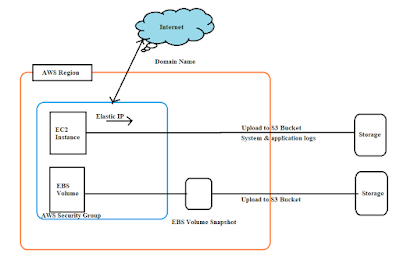Amazon AWS Overview and its Architecture

Amazon Web Services (AWS) is Amazon’s cloud website hosting platform. It offers flexible, reliable, scalable, easy-to-use and price-powerful solutions. Architecture: S3 (Simple Storage Service): S3 allows the users to store and retrieve various types of data using API calls. It doesn’t contain any computing element. Load Balancing: Load balancing certainly means hardware or software load over web servers that improves the efficiency of the server as well as the application. Hardware load balancer is a network appliance used in traditional internet application architectures. AWS presents the Elastic Load Balancing provider, it distributes the visitors to EC2 instances throughout multiple available resources, and dynamic addition and elimination of Amazon EC2 hosts from the load-balancing rotation. Elastic Load Balancing can dynamically develop and reduce the load-balancing capacity to modify to visitors demands and also help sticky cla...